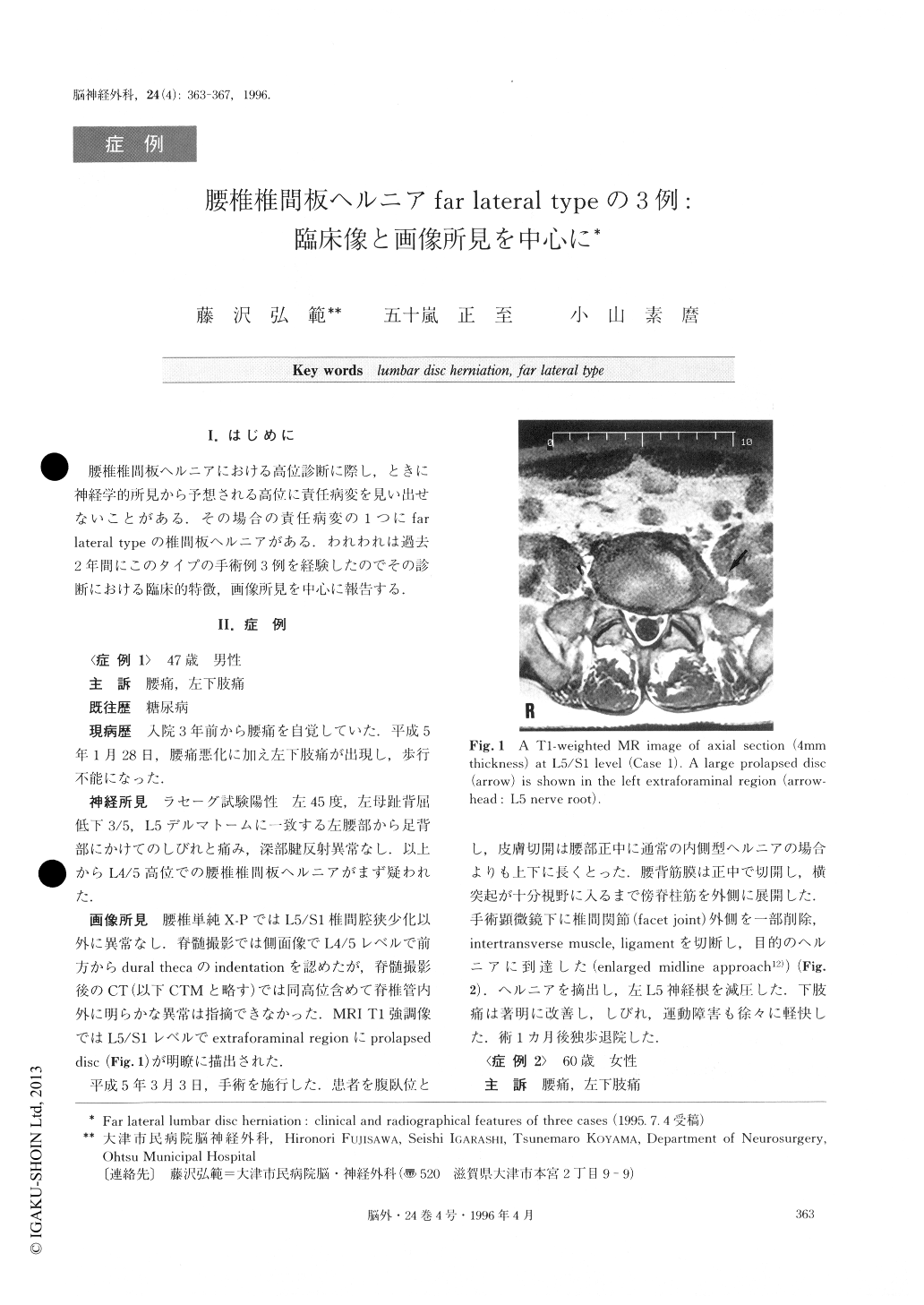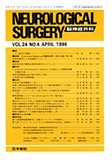Japanese
English
- 有料閲覧
- Abstract 文献概要
- 1ページ目 Look Inside
I.はじめに
腰椎椎間板ヘルニアにおける高位診断に際し,ときに神経学的所見から予想される高位に責任病変を見い出せないことがある.その場合の責任病変の1つにfar lateral typeの椎間板ヘルニアがある.われわれは過去2年間にこのタイプの手術例3例を経験したのでその診断における臨床的特徴,画像所見を中心に報告する.
The authors report three operated cases of far lateral lumbar disc herniation (FLLDH) during the past two years and discuss their diagnostic pitfalls. Until recently FLLDH was hardly ever diagnosed because the myelography was negative in almost all cases. Since the advent of CT and/or MRI, FLLDH has been found to be not such a rare entity. FLLDH has also been found to reveal characteristic clinical features and radiographical findings. Usual lumbar disc herniations occur at L4/5 or L5/S1 levels, producing low back pain with the pain or sensory disturbance from the postern-lateral thigh down to the foot. In contrast, FLLDH affects upper lumbar levels and produces severe antero-lateral thigh pain, dysesthesia resulting from nerve root or dorsal root ganglion (DRG) compression in the fora-minal or extraforaminal region. The level predilection of these two groups can be attributed to the difference of the facet joint planes between the upper and lower lumbar levels. The facets with a coronal plane are resis-tant to lateral bending and rotational forces, but those with a sagittal plane are unstable resulting in more shearing stress to the intervertebral discs.
A patient with definite neurological signs but a nega-tive myelography should be examined for FLLDH by using a high-resolution CT or MRI. MRI clearly shows the detailed anatomical relationships between herniated disc and nerve root or DRG in the foraminal and extra-foraminal regions. As well as thin-sliced axial images, sagittal MR images that include the foraminal zone are useful for detecting a direct nerve root compression from FLLDH.
The authors conclude that gait disturbance due to se-vere leg pain, antero-lateral thigh pain or dysesthesia are characteristic of FLLDH, and that either a foramin-al or extraforaminal herniated disc or both on a CT and/or MRI are diagnostic radiographical findings of FLLDH.

Copyright © 1996, Igaku-Shoin Ltd. All rights reserved.


